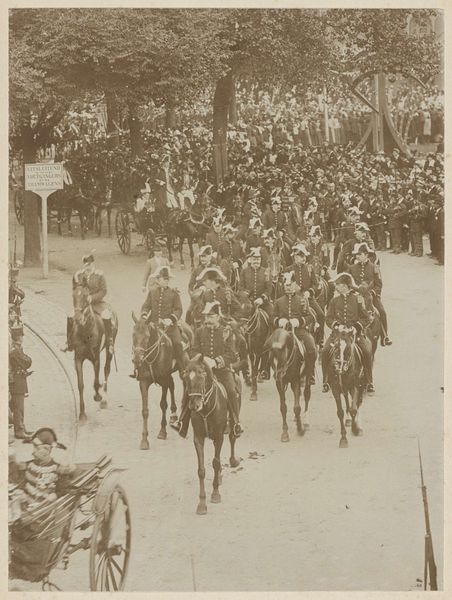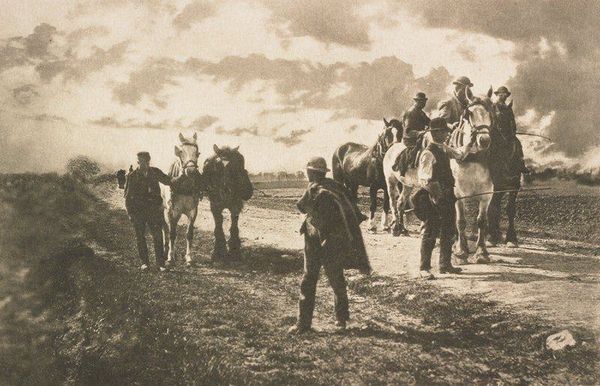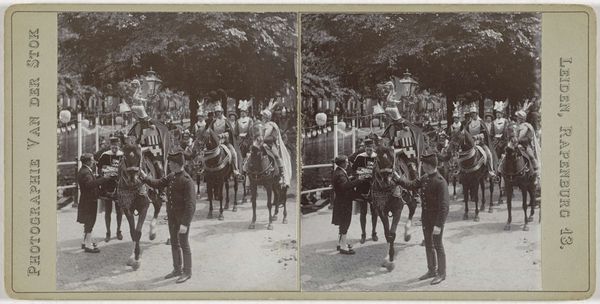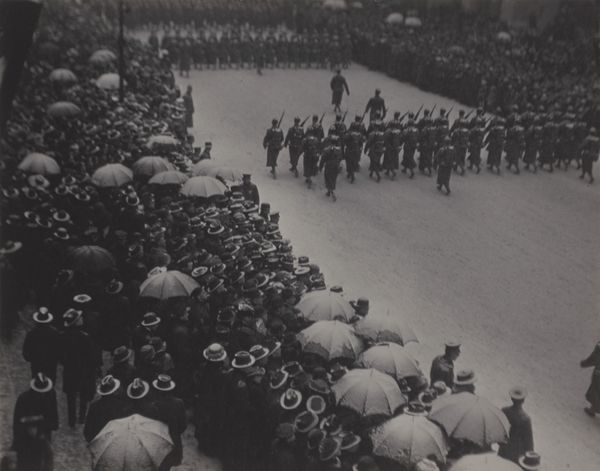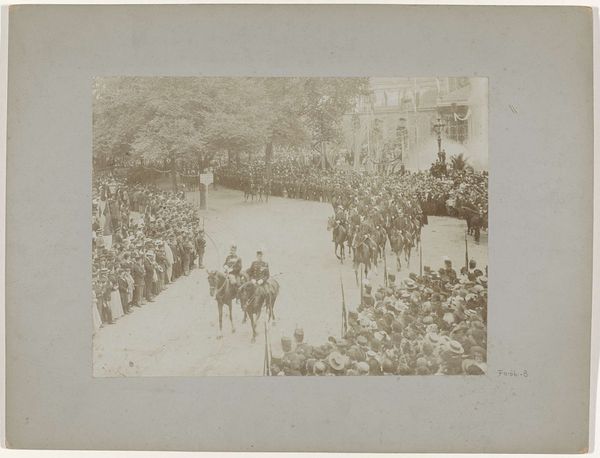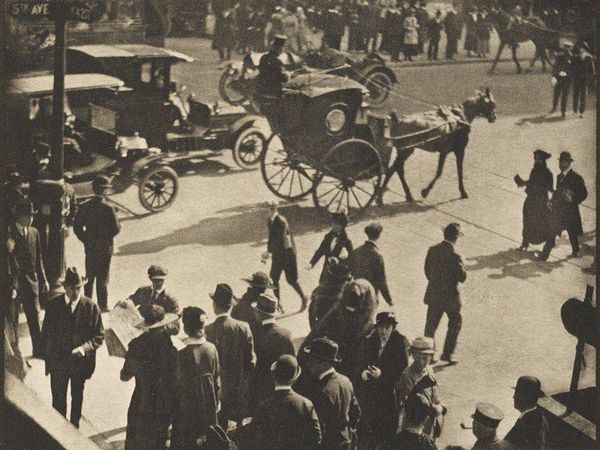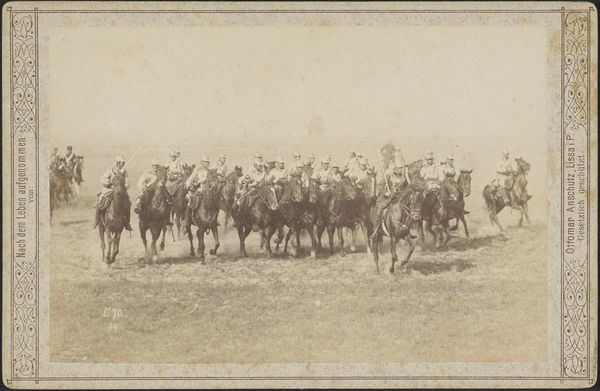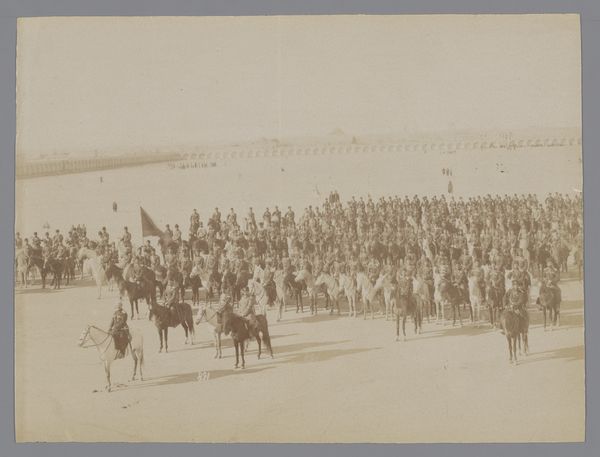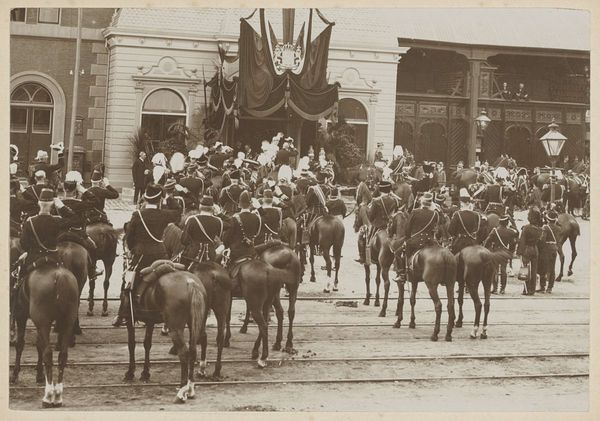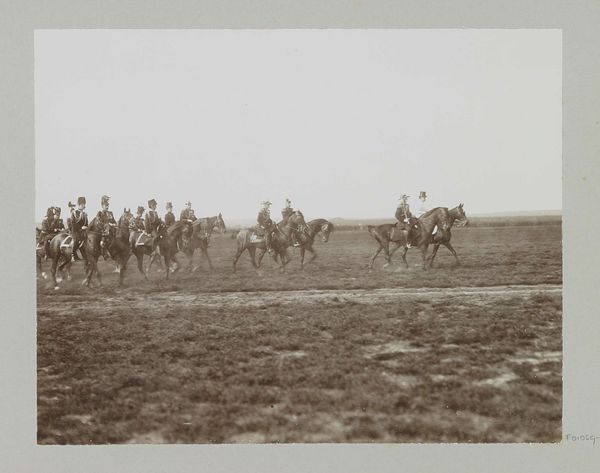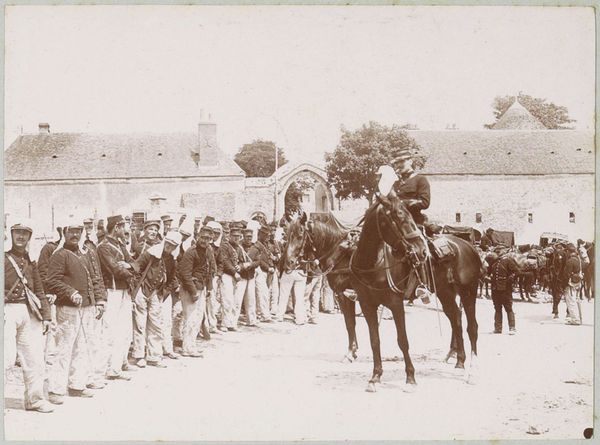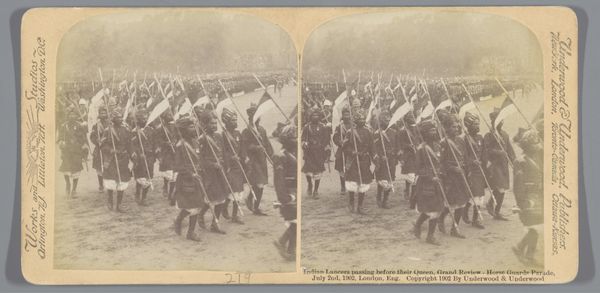
Dimensions: height 226 mm, width 287 mm, height 340 mm, width 454 mm
Copyright: Rijks Museum: Open Domain
Editor: Willem Ganter's gelatin silver print, "Rijtoer door Rotterdam van Koningin Wilhelmina," made in 1899, depicts Queen Wilhelmina's procession. It feels like a meticulously staged tableau, brimming with people. As a history painting in photographic form, it suggests interesting things about the culture of photography. What's your take on how this image functions in its historical context? Curator: This image is particularly interesting when considering the political power of images at the turn of the century. Photography, then, was rapidly becoming a crucial tool for shaping public perception. Consider the carefully orchestrated scene: the Queen, elevated in her carriage, surrounded by symbols of state – horses, flags, military personnel – while the populace is assembled en masse. Editor: It really does come across as an orchestrated attempt at image management. Is the sheer number of people part of that intention? Curator: Absolutely! The density of the crowd emphasizes the Queen’s widespread support. Note how their gaze is directed towards the carriage. This photograph, likely commissioned or at least sanctioned by the royal house, aims to project an image of strength, stability, and connection to the people. Can you see hints of social class in the arrangement of figures here? Editor: Yes, now that you mention it, the figures closest to the carriage appear better dressed and more formally posed than the crowd further back. The photograph subtly reinforces the existing social hierarchy. I had never considered that photographs, particularly documentary ones, could also contain coded class messages. Curator: Precisely. Understanding the cultural and political role of photographs like this gives us insight into the complexities of image-making as a powerful tool in shaping collective memory and maintaining existing power structures. It allows us to question whose narrative is being presented. Editor: This image definitely provides insight into how photography participated in the politics of representation and constructing an image of nationhood at that time.
Comments
No comments
Be the first to comment and join the conversation on the ultimate creative platform.
